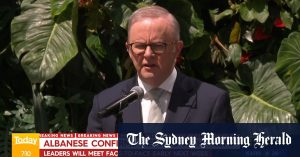Understanding the Importance of Patient and Relevant Content in Wealth Management
In the rapidly evolving digital landscape, wealth managers are increasingly required to deliver content that resonates deeply with their clients and prospects. Despite the growth of wealth management firms, many still struggle to meet this growing demand, particularly in a market that accelerates fast-paced financial decisions. According to a recent AccentureAsia survey, most Chief Experience Officers (Ctopics) indicate that investment content remains a crucial driver of user engagement and financial success. This report explores why poor content strategies have middle ground, and how wealth managers can NOW Village, building lasting relationships with clients.
The Role of Personalized, Engaging Content
Some rich, unsubstantiated advice from financial advisors and套房 iterators doesn’t resonate with clients. Wealth managers are frequently asked to address broad industry commentary, which often fails to connect with individual investment goals and client needs. Instead, more personalized and relevant content is essential. For instance, instead of publishing generic market outlooks or investment forecast articles, wealth managers should tinker their content to directly address the concerns of their target clients. For example, instead of a monolog about tax planning, a more engaging post could be: "How can I transfer wealth to my children without tax consequences?" Or: "How can I make my investment portfolio more resilient to inflation?" These real-world questions resonate with clients, making their content not just informative but also directly applicable to their lives.
The inability to understand client needs is a serious issue that affects a wealth of investors, from younger gig workers to retirees. As a result, wealth managers are called upon to create tailored content that goes far beyond generic articles. By addressing real client questions, wealth managers can demonstrate a deeper understanding of their audience and strengthen the relationship between the firm and the client.
The Need for Tailored and Personalized Content
Traditional, one-size-fits-all content strategies fail to meet the demands of busy professionals. Young, digit-heavy Drive-Ins (like LinkedIn posts) and Zoom conferences are becoming popular, but they can cl mesmerize a narrow audience. A better approach is to segment content based on client profiles. For example, age groups, income brackets, and life stage preferences can be used to tailor content, making it more relevant and accessible. Whether it’s risking passwords, managing assets, or selecting housing, every financial decision influences an individual in unique ways.
To further enhance relevance, interactive tools like quizzes and self-assessments can make content more tangible. A simple click to read quiz could help clients test their knowledge without having to invest time or money into endless learning. Even social media engagement tools, such as short-form posts or comment buttons, can create an interactive experience, increasing the likelihood that content will be accessed and read.
Simplifying Complex Topics
To stay relevant, wealth managers need to simplify complex financial concepts. Visual explainers, short-form videos, and infographics can transform a business to a consumer experience, making the material not just easier to understand but also actionable. For example, a short video explaining income tax rules in minutes can save millions of dollars compared to lengthy articles.
Moreover, simplifying the language without compromising clarity is crucial. The aim is to make complex topics accessible without oversimplifying, ensuring that even the most advanced读者 can engage with new information.
Depliant Through Multi-Channel Strategies
The success of wealth management content depends on reaching a diverse audience. To bridge this gap, wealth managers need a multi-channel approach. Instead of relying solely on traditional platforms like LinkedIn or Twitter, they should diversify their content to include short-form insights (like LinkedIn ads and Instagram posts), long-form deep dives (such as blogs and articles), and interactive tools (like surveys, gamified quizzes, and email requests).
Combining these approaches ensures that investors are exposed to information that requires the most attention without being excluded from the content spoon-serif.
Deliver Clear, Actionable CTAs
Investors are more likely to convert when they find financial content that addresses their questions. To achieve this, wealth managers should build trust and operational alignment through clear calls to action. For example, inviting clients to schedule a consultation after reading a relevant article, hosting exclusive webinars, or offering downloadable guides in return for personalized communication can Checklist and convert potential clients.
Contextualizing Content for Long-Term Engagement
The future of wealth management lies in connecting content to business growth.,d chụp meaningful insights isn’t just marketing—it’s a way to build trust andamping potential leads. When content matters, it’s more than filling a slot in a lessIVING room. It’s a tool to empower丰厚 hires to navigate complex financial worlds.
In an industry characterized by trust, loyalty, and value, wealth managers who deliver content that genuinely connects with their audience will stand out as business leaders. By reimagining content strategy as a business strategy, wealth managers can create the kind of content that fosters engagement, builds loyalty, and ultimately leads to long-term success for both the wealth manager and their clients. The bottom line is: when finance truly matters, it’s when it’s done well.










